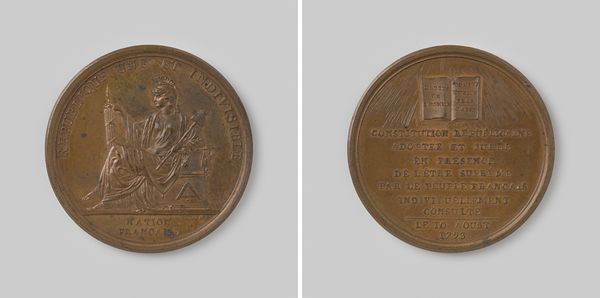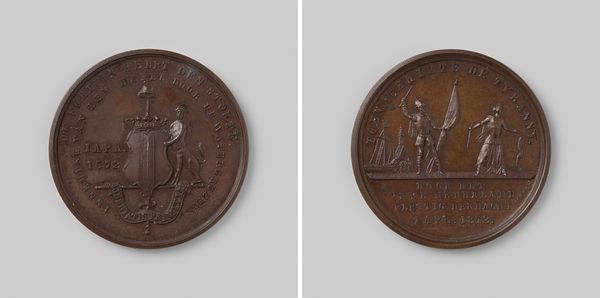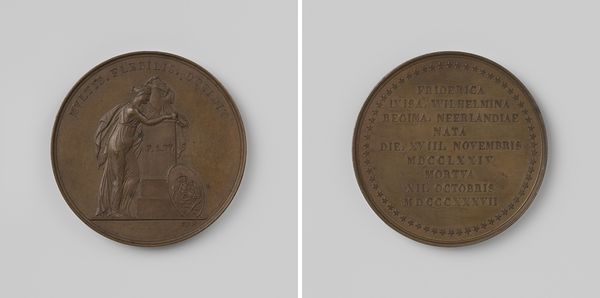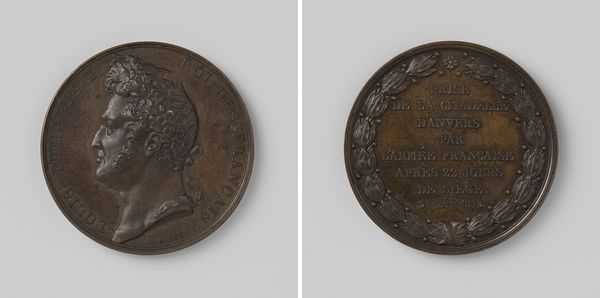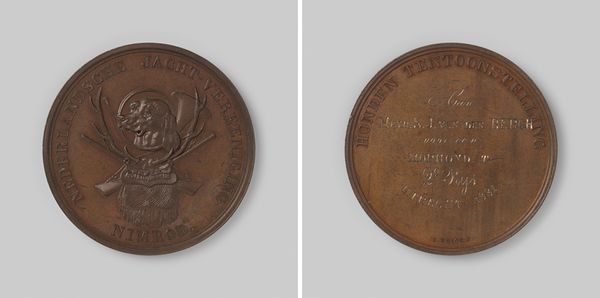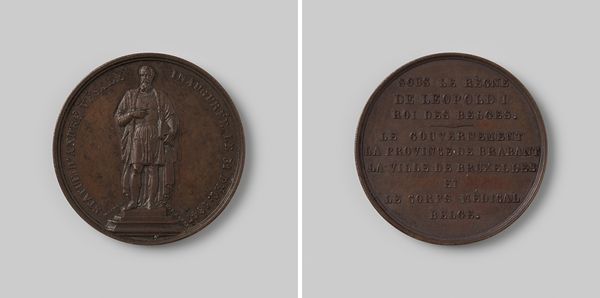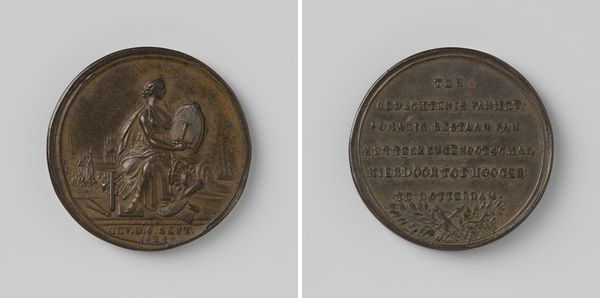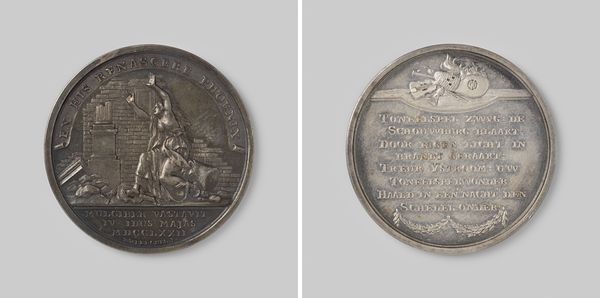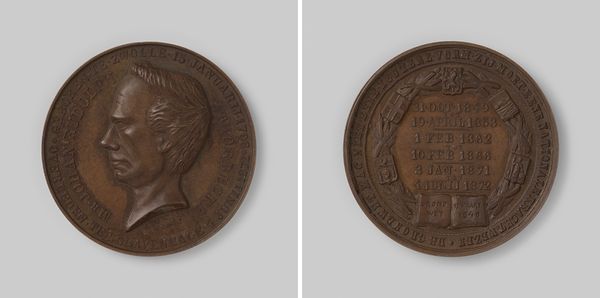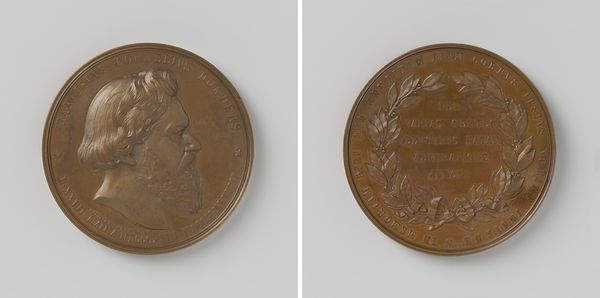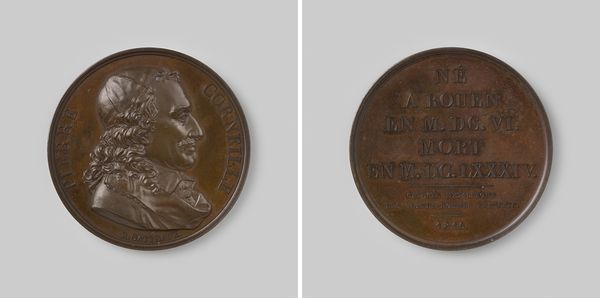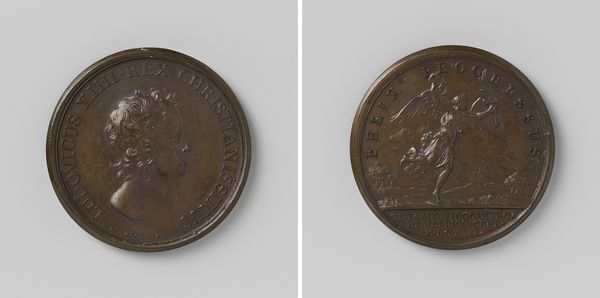
metal, relief, bronze, sculpture
#
metal
#
relief
#
bronze
#
sculpture
#
history-painting
Dimensions: diameter 3.3 cm, weight 16.72 gr
Copyright: Rijks Museum: Open Domain
Curator: Joseph-Pierre Braemt created this bronze relief, possibly in 1830, titled "Het nemen van de brug van Walhem"—"The Taking of the Walhem Bridge." Editor: There's something quite striking about its compressed, almost flattened composition. The circular form and the bas-relief really distill the narrative to its bare essentials, and I would add a patriotic fervor in terms of tone. Curator: The work memorializes a historical event, undoubtedly connected to the political upheaval in the 1830s. Medals like these weren't just art objects, they served a clear purpose: to commemorate victories, and promote certain political views within a society in transition. Editor: Notice how the artist plays with depth, or lack thereof? The figures in the background—soldiers crossing the bridge—are rendered very minimally, whereas the allegorical figure in the foreground, possibly representing victory or freedom, is far more detailed. This creates a dynamic contrast, pushing and pulling the eye. It's worth noting how even the patina, that lovely brown tone of the bronze, seems integral to conveying the solemnity of the depicted event. Curator: Right, the medal's inscriptions on the other side further clarify the event, singling out specific individuals for their courage: General Mellinet, Leboeuf, and others involved in the "taking" you refer to it as heroic act of seizing the bridge, a significant event in consolidating power. The medium itself reinforces the message. Bronze is durable, suggesting permanence and importance to a still illiterate population. Editor: And from a design perspective, the text creates a satisfying balance with the figural scene, though one might say there's a clear tension between the descriptive precision of language, with a classical allegorical rendering style. Curator: It serves to amplify national identity and reinforce collective memory. These medallions circulated widely, engaging many different kinds of publics with state-sponsored narratives, something the ruling elite have always struggled with. Editor: Ultimately, its power lies in that careful orchestration of form and symbol, using the inherent qualities of relief to immortalize not just an event, but also a particular idea of heroism. It goes far beyond the purely commemorative object into powerful nationalist allegory. Curator: Indeed, it embodies how state-sponsored art attempts to craft the past into the future's aspirations.
Comments
No comments
Be the first to comment and join the conversation on the ultimate creative platform.
